Several plants are poisonous to equines and must be removed if found on grazing land. It’s important to know what these plants are and what they look like, so owners can easily identify them.
- Home
- What We Do
- Equine Advice
- Poisonous Plants for Equines
Poisonous Plants for Equines
Ragwort
How to identify ragwort
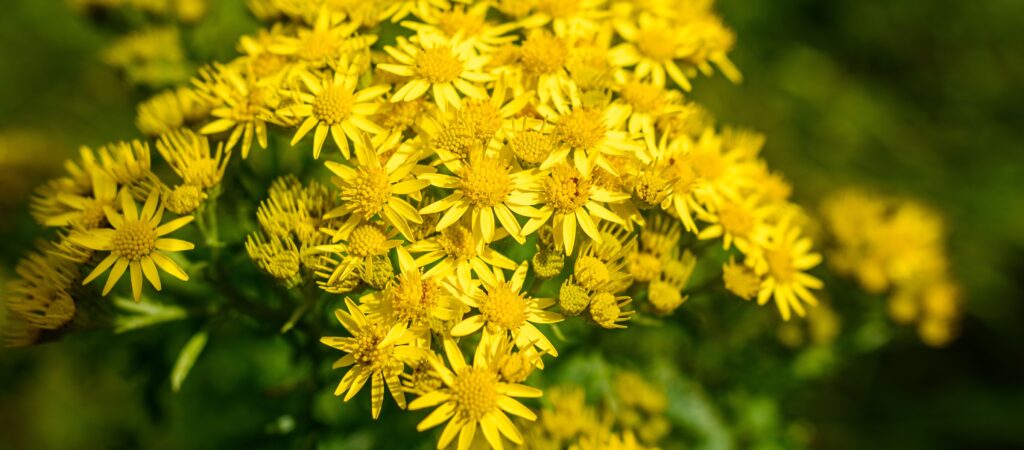
Ragwort will appear in your pastures in the seedling stage from autumn to June. It is important to spot them at the rosette stage at about 10-15cm high.
As the rosette develops, the leaves look irregular with jagged edges. Rosettes are often dark green but can be tinged with purple.
As the plants grow, yellow daisy like flowers will appear from June to late October.
One plant can produce and spread thousands of seeds which can lay dormant for years. The seeds ripen in July/August and are normally shed from September onwards.
An adult plant can grow anywhere between 30-100cm depending on the environment.
Ragwort is a deep-rooting plant.
Ragwort is a common weed that can be seen on wasteland, road verges and river banks.
As horse owners the concern is that ragwort can easily spread from neighbouring land.
While ragwort is growing it tastes bitter to the horse so they usually will not eat it unless food is in short supply. When ragwort is wilted and dried it becomes much more palatable, loses its bitter taste. It will remain toxic, and care must be taken as it can be accidently found in hay.
Clinical signs of ingestion
- The horse becomes depressed/lethargic
- Jaundice (a yellow tinge in the gums and eyes)
- Photosensitisation (inflammation of the skin)
- Diarrhoea
- Abdominal pain (colic)
- Weight loss
- Neurological signs including head pressing, loss of coordination, continuous circling, seizures
- Aggressiveness that is not normally present
Impact on the horse if it has eaten ragwort
- Ragwort contains Pyrrolizidine Alkaloids (PAs), and ingestion leads to toxic by-products produced in the liver.
- These toxic by-products called pyroles disrupt DNA function in the liver cells.
- Damaged cells lose their capacity to regenerate.
- The liver has the ability to function until approximately 70% becomes damaged.
- At this stage there is no effective treatment to reverse the damage to the liver cells.
St John's Wort
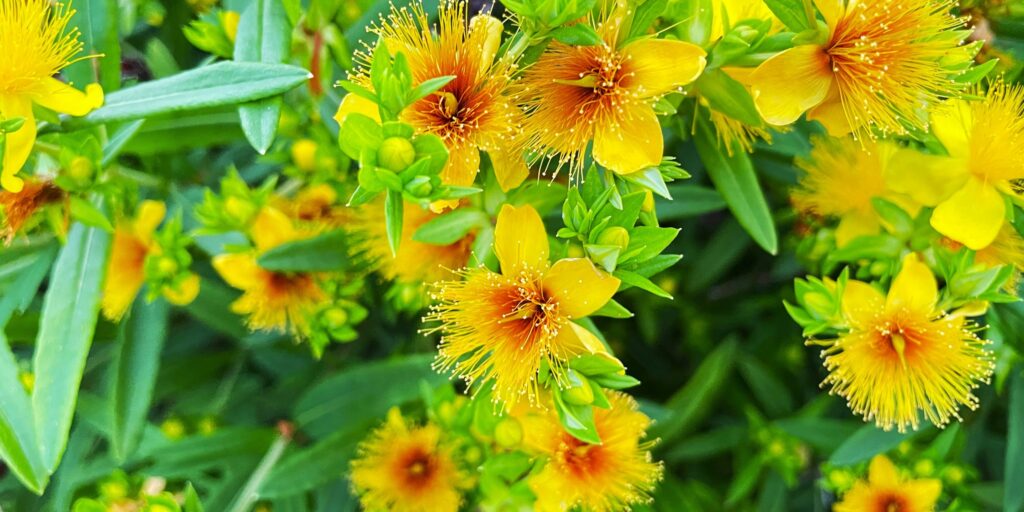
St John’s Wort looks very similar to ragwort and can often be mistaken for this due to similar clinical signs. The way to tell the difference between this and ragwort toxicity is through a blood test. St John’s Wort causes no liver insult/pathology on blood tests and has slightly bigger flowers.
Other poisonous plants
Foxglove

Foxglove can grow up to 2 metres in height. The flowers appear from June to September. Mainly found in hedgerows and the edge of woodland. Ingesting as little as 100 grams of this plant can be fatal, and while foxglove in wet soil isn’t very appetizing to equines, it’s highly dangerous when dried in hay.
Clinical signs of foxglove poisoning and toxicity:
Contains cardiac glycoside toxins.
Clinical signs include:
- Changes to heart rate
- Breathing difficulties.
- Diarrhoea
- Dilated pupils
- Tremors and fits
Prognosis and treatment
Foxglove poisoning can cause death in just a few hours. You should contact your vet as soon as possible if you think your horse has eaten. foxgloves, and the sooner the better. A vet may use activated charcoal and mineral oil to flush out the toxins if caught early enough.
There are few treatment options available, unfortunately, the toxins can act immediately on the horse’s cardiovascular system, causing significant damage.
To prevent foxglove consumption:
- Keep horses away from areas of foxglove growth.
- Remove any foxgloves on your land as soon as you see it. Just like ragwort the plant remains toxic when the plant is dried and dead.
Prevention is better than cure. Horses do not usually eat foxgloves when on good pasture, they will normally only eat it when no other food is available.
Deadly nightshade
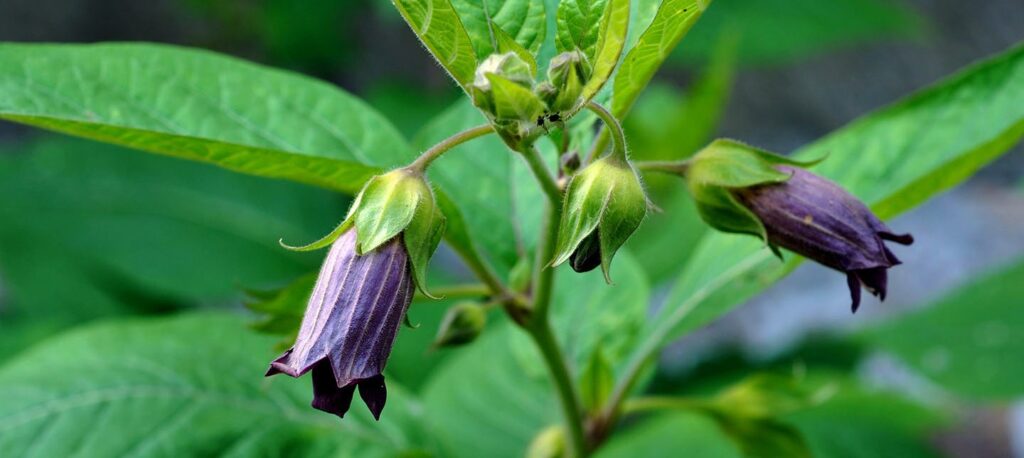
Deadly Nightshade can grow up to 1.5 metres in height. The leaves can grow up to 20cm long. The flowers are most often a dull brown-purple colour and grow up to 3cm.The berry is black and shiny.
Clinical signs of deadly nightshade poisoning and toxicity
In all parts of the plant, including the stems and leaves the toxin is atropine alkaloids.
Clinical signs include:
- Dilated pupils
- Blindness
- Change in heart rate
- Muscle tremors
- Disorientation
Prognosis and treatment:
If you think your horse has eaten deadly nightshade, call your vet and follow the advice. Death from deadly nightshade intoxication is rare.
Prevention
- Remove any deadly nightshade in your pasture by pulling or digging it up.
- Horses find deadly nightshade unpleasant therefore rarely eat it.
Ivy
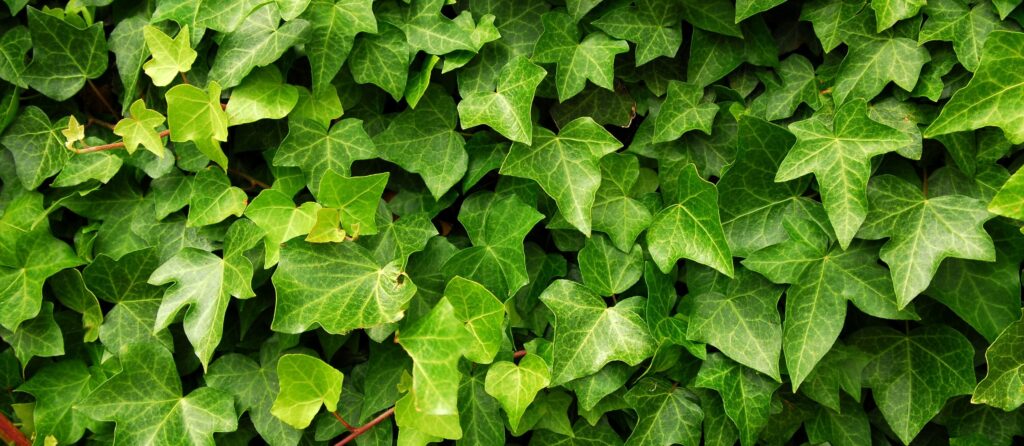
Ivy has dark green, triangle shaped leaves. It grows in vines.
Clinical signs of ivy poisoning and toxicity:
Toxins in ivy are triterpenoid saponins and polyacetylene.
Clinical signs include:
- Diarrhoea
- Colic
- Skin irritation around the mouth
- Loss of appetite
- Dehydration
Prognosis and treatment:
Contact your vet as soon as you think your horse has eaten ivy to treat the symptoms and prevent any further toxin damage. Death from ivy poisoning is rare.
Prevention:
- Remove any ivy you find in your pasture.
- Keep horses away from areas where ivy grows.
Ivy is unpleasant to horses so they will rarely eat it.
Yew trees
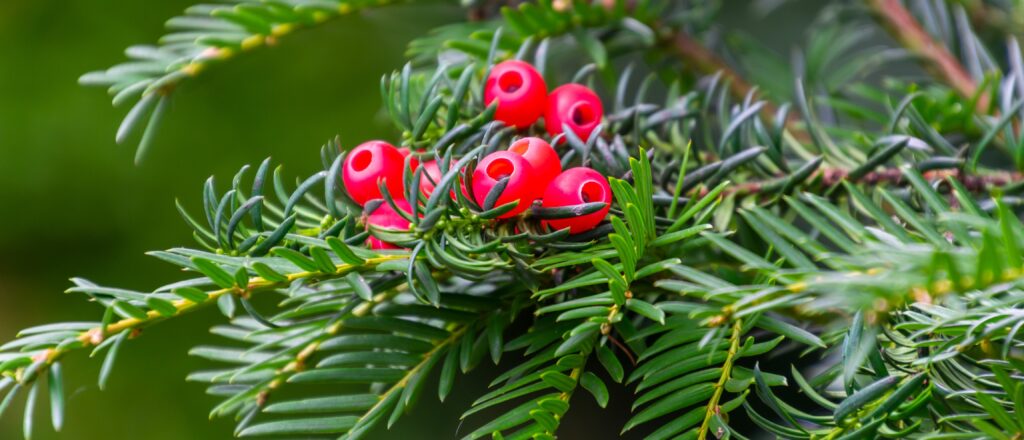
Yew are evergreen trees or bushes and can grow up to 20 meters high. The thick trunk is a red-brown colour with scaly and peeling bark. Leaves are around 1-3cm long and dark green, needle-shaped. The young leaves are bright green, and the berries are red.
Clinical signs of yew poisoning and toxicity:
Yew contains the deadly toxin taxine, a cardiotoxin that causes a heart attack.
Clinical signs include:
- Sudden collapse of the horse.
- Groaning sounds
- Muscle tremors
- Disorientation
Prognosis and treatment:
Contact your vet immediately if you think that your horse has eaten yew, taxine poisoning can be fatal.
Prevention
- Offer plenty of forage to horses as they do not normally eat yew due to its bitterness. If food is in short supply, they may be forced to eat it.
- Keep your horse well away from any yew plants. Put up a fence to keep horses away from any yew hedges on neighbouring properties, as dead yew and clippings still contain toxins.
Laburnum
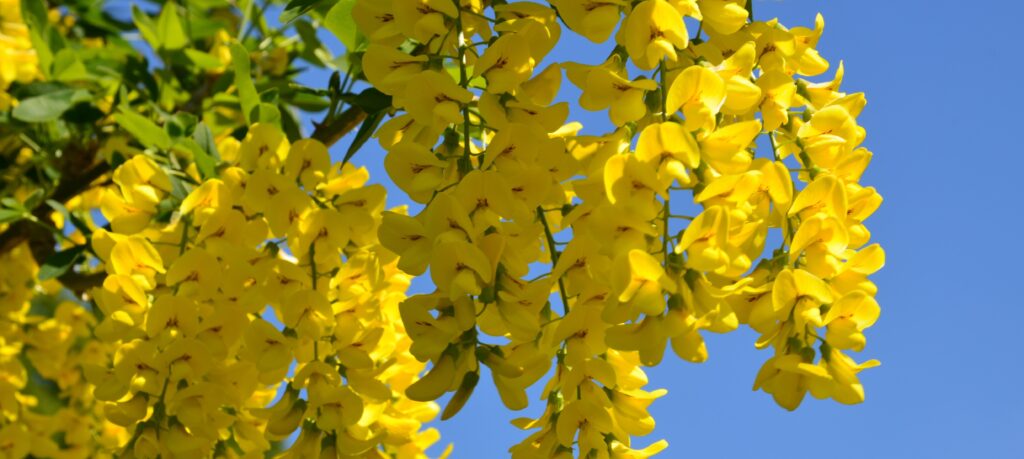
Laburnum can grow to 8 metres high. The bark is a smooth, grey or olive – green colour. It produces bright yellow flowers that droop.
Clinical signs of laburnum poisoning and toxicity:
Laburnum contains the toxin cytosine, it is present in all parts of the plant, but especially the seeds.
Clinical signs include:
- Colic
- Diarrhoea.
- Drowsiness
- Excessive salivation
- Fitting
- Collapse
- Coma
Prognosis and treatment:
If you think that your horse has eaten laburnum, contact your vet immediately. Your vet may use activated charcoal and fluids to flush the toxin out.
Prevention:
- Keep your horses away from areas where laburnum trees grow or fence off the area around the trees to avoid horses reaching them.
Laburnum tastes bitter to horses so do not normally eat it unless short of food.
Remember we are here at Bransby Horses to support you with the health and welfare of your horse, if you require further information on any of the above or you would like to discuss your management plan please call 01427 787369 or email welfare@bransbyhorses.co.uk.
